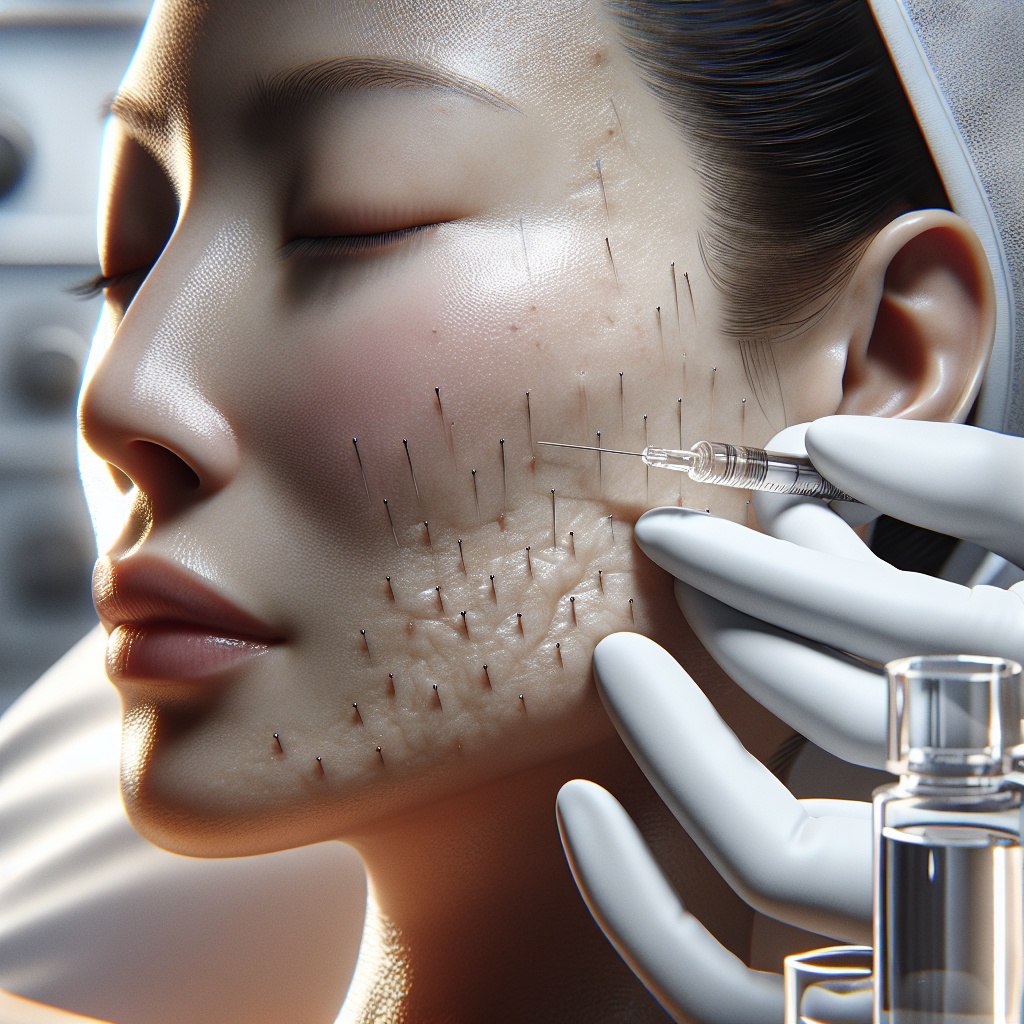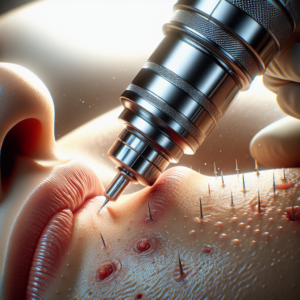Contents
- 1 What Is Microneedling? Benefits, Risks, and Everything You Should Know
- 2 What Is Microneedling?
- 3 How Does Microneedling Work?
- 4 What Are the Benefits of Microneedling?
- 5 Microneedling for Hair Loss
- 6 In-Office vs. At-Home Microneedling
- 7 Is Microneedling Safe?
- 8 Who Should Avoid Microneedling?
- 9 What to Expect During and After a Microneedling Session
- 10 Microneedling Aftercare Tips
- 11 The Bottom Line
What Is Microneedling? Benefits, Risks, and Everything You Should Know
Microneedling has gained serious popularity in recent years as a powerful skin rejuvenation treatment. Whether you’ve heard about it from a dermatologist, a skincare influencer, or seen jaw-dropping before-and-after photos on social media, there’s no doubt this treatment is making waves. But what exactly is microneedling? How does it work? Is it safe for everyone? And more importantly—does it actually deliver results?
In this guide, we’ll break down everything you need to know about microneedling, including how it works, its benefits, potential side effects, and who it’s best for. If you’re considering this treatment, read on to get the full picture before jumping in.
What Is Microneedling?
Microneedling—also known as collagen induction therapy—is a minimally invasive cosmetic procedure that involves puncturing the skin with tiny, sterile needles. These controlled micro-injuries stimulate the skin’s natural healing process, boosting the production of collagen and elastin, which are the building blocks of firm, smooth, youthful skin.
Microneedling is typically performed using a specialized device, such as a dermaroller or a microneedling pen. The needle depth can vary depending on the condition being treated. Professional treatments usually use needles ranging from 0.5mm to 2.5mm, while at-home devices use shorter, less invasive needles (0.2mm to 0.5mm).
How Does Microneedling Work?
The principle behind microneedling is simple: controlled skin injury leads to healing and regeneration. When the skin is punctured by fine needles, it triggers the body’s wound-healing response. As a result, the body increases collagen and elastin production in the affected area.
In addition to collagen stimulation, microneedling also creates tiny channels in the skin, allowing for better absorption of skincare products like serums, hyaluronic acid, peptides, and growth factors. This enhances the effectiveness of topical treatments post-procedure.
What Are the Benefits of Microneedling?
Microneedling offers a wide range of benefits, making it a versatile treatment for various skin concerns:
- Reduces Fine Lines and Wrinkles: By increasing collagen, microneedling helps plump the skin and smooth out expression lines and wrinkles.
- Improves Skin Texture: It can refine skin texture, minimizing the appearance of large pores and rough patches.
- Fades Acne Scars: One of the most popular uses of microneedling is to reduce the appearance of atrophic acne scars over time.
- Lightens Hyperpigmentation: Microneedling may help fade sun spots, melasma, and post-inflammatory hyperpigmentation.
- Boosts Radiance: After healing, many people notice a brighter, more youthful glow.
- Reduces Stretch Marks: It can be used on the body to reduce the visibility of stretch marks and improve skin tone.
Microneedling for Hair Loss
Microneedling isn’t just for facial rejuvenation—it’s also gaining traction as a treatment for hair loss. When performed on the scalp, microneedling may promote hair growth by increasing blood flow and enhancing the absorption of topical treatments like minoxidil. This application is particularly useful for individuals with androgenic alopecia (pattern baldness).
In-Office vs. At-Home Microneedling
Microneedling can be done either at home or in a professional setting. But there are key differences:
- Professional Microneedling: Typically performed by a dermatologist or licensed aesthetician using medical-grade tools and longer needles. These sessions can penetrate deeper into the skin and deliver more dramatic results with lower risk (when done by a trained expert).
- At-Home Microneedling: Involves using a dermaroller or microneedling pen with shorter needles. While more affordable and convenient, the results are usually subtler, and there’s a higher risk of improper technique or contamination.
For those new to microneedling or with more significant skin issues like scarring, it’s usually best to start with professional treatments.
Is Microneedling Safe?
Yes, microneedling is generally safe for most skin types when performed correctly. However, like any skincare treatment, it does come with some potential risks and side effects. These include:
- Redness and Swelling: It’s normal to experience some redness, swelling, and sensitivity for 1–3 days after a session.
- Dryness or Flaking: As the skin heals, it may feel dry or peel slightly.
- Bruising: Minor bruising can occur, especially around sensitive areas.
- Infection: Rare but possible if the skin or tools are not properly sanitized.
- Hyperpigmentation: In rare cases, individuals with darker skin tones may experience post-inflammatory hyperpigmentation if not treated properly.
Always follow pre- and post-treatment instructions from your provider to minimize risks and speed up recovery.
Who Should Avoid Microneedling?
While microneedling is safe for many people, it’s not suitable for everyone. You should avoid microneedling if you:
- Have active acne, eczema, psoriasis, or rosacea
- Are prone to keloid scarring
- Have open wounds or skin infections
- Are on blood thinners or have a bleeding disorder
- Are pregnant or nursing (consult your doctor first)
Always consult with a dermatologist before starting microneedling, especially if you have pre-existing skin conditions or concerns.
What to Expect During and After a Microneedling Session
Here’s what a typical in-office microneedling session looks like:
- Preparation: The provider cleanses your face and applies a numbing cream for comfort.
- Treatment: A microneedling pen or dermaroller is used to make controlled punctures across the skin’s surface.
- Post-Treatment: A soothing serum is applied, and you may receive aftercare instructions including sunscreen use and product recommendations.
Most people need a series of 3–6 treatments spaced about 4 weeks apart for optimal results. Improvements typically begin to show after a few weeks and continue to progress over time.
Microneedling Aftercare Tips
To get the most out of your treatment and prevent complications, follow these aftercare tips:
- Avoid sun exposure and wear SPF daily
- Use gentle, hydrating products like hyaluronic acid
- Avoid makeup and harsh actives (retinol, AHAs, vitamin C) for 48 hours
- Keep your skin clean and avoid touching your face unnecessarily
Healing usually takes 3–5 days, depending on needle depth and your skin’s sensitivity.
The Bottom Line
Microneedling is a powerful, minimally invasive treatment that can visibly improve your skin’s texture, tone, and overall appearance. Whether you’re looking to fade scars, soften wrinkles, or just give your skin a glow-up, microneedling offers real results—especially when performed by a qualified professional.
Like any skincare treatment, success depends on proper technique, realistic expectations, and consistent aftercare. If you’re unsure whether microneedling is right for you, consult with a licensed dermatologist to create a safe, personalized treatment plan.


